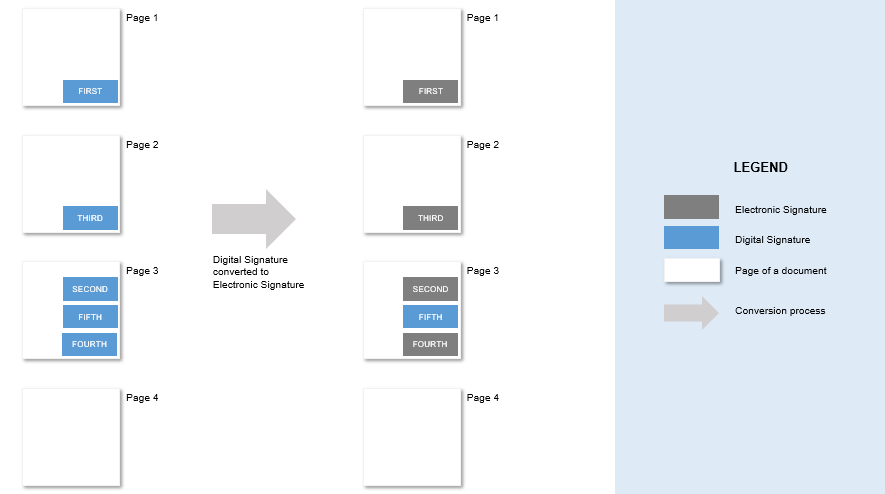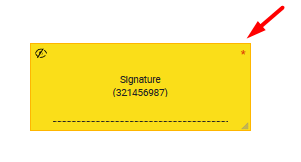Add signature fields
SigningHub allows you to add signatures in a workflow, Read more about the types of signatures as per level of assurances. Adding signatures for a recipient/ placeholder will consume signatures quota of your (document owner's) account, after being signed by the recipient.
Once you add a signature field, the signature field is marked with "Signature". You can also add multiple signature fields for a recipient in a document.
Adding a signature field is subject to your assigned enterprise user role. If you wish to use this provision, ask your Enterprise Admin to enable the respective signature field in your Role>Document Settings.
Upon adding a signature field, a level of assurance will be set for a signature field which is set by default as per the configured default level of assurance under Personal Settings>Signature Settings. Level of assurance options for a signature field is subject to your assigned enterprise user role, If you are wish to use more options, ask your Enterprise Admin to enable the respective level of assurances in your Role>Document Settings.
After you have:
- Added the documents,
- Added all the recipients, electronic seals and placeholders,
- Configured workflow type and,
- Configured special privileges for each recipient/ placeholder as required in a workflow package:
Add a signature field
- Select the document from the left side of document viewer screen, on which signature is required from a signer. Click the settings icon
 (on the left side of the screen) if you want to manage the added documents.
(on the left side of the screen) if you want to manage the added documents. - Select the recipient (signer/ electronic seal/ placeholder) from the right side of document viewer screen, for whom you want to add a signature field. Click the settings icon
 (on the right side of the screen) if you want to manage the added recipients.
(on the right side of the screen) if you want to manage the added recipients.
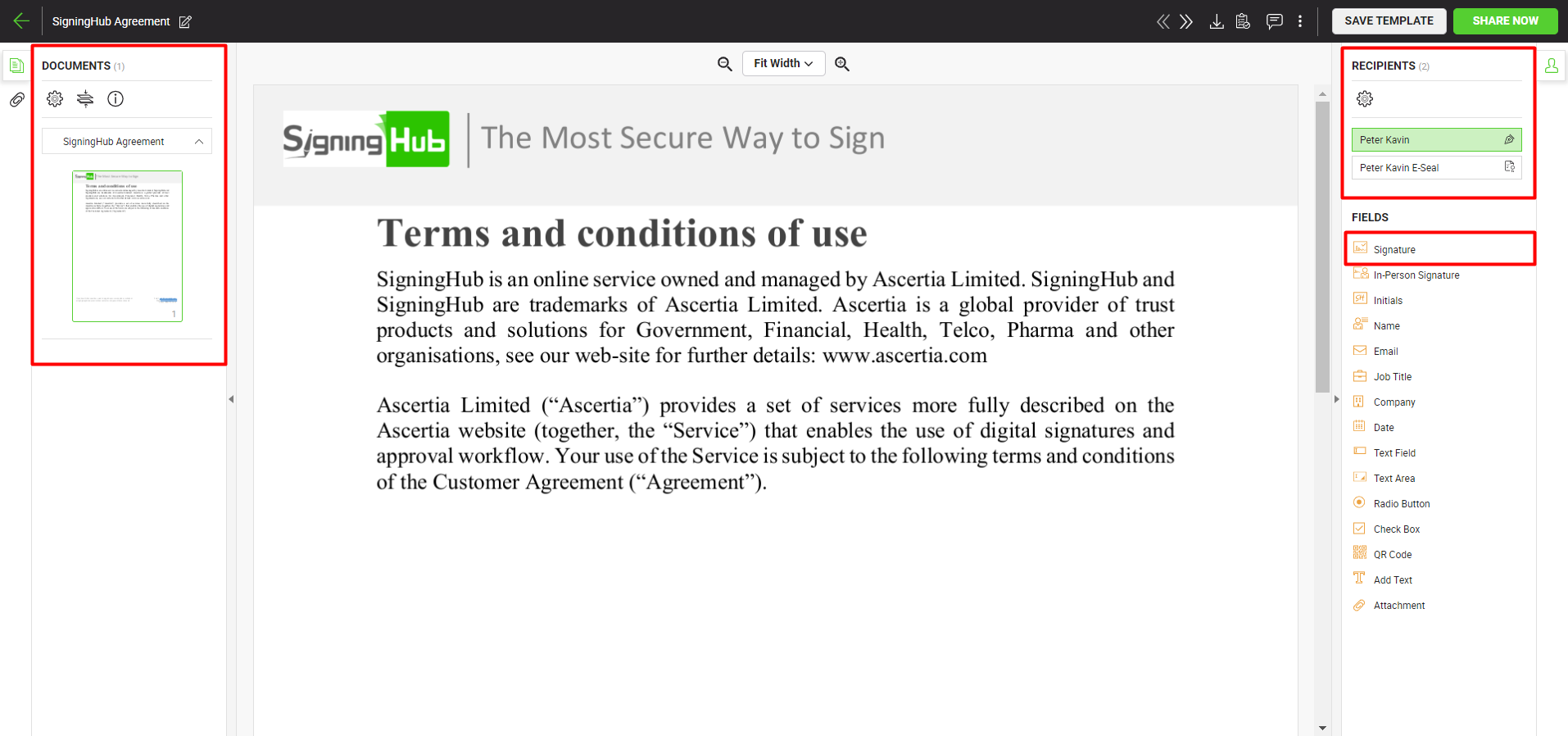
- Drop the "Signature" field on the required location on the document. By default, upon dropping the "Signature" field, the "Edit Signature Field" dialog is displayed.
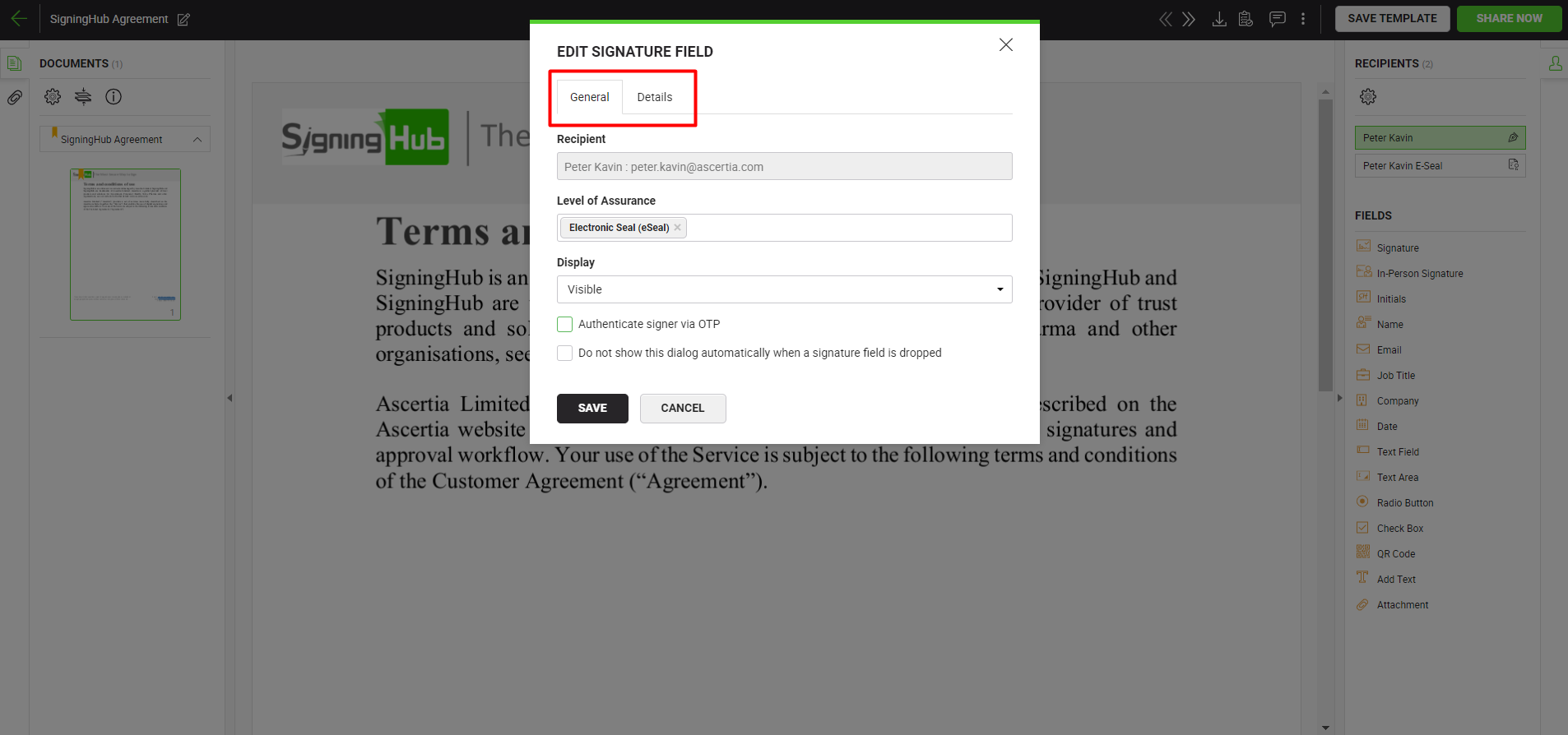
- Specify the details under "Details" and "Dimensions" tab as needed. See the "Signature Fields" table below for the description of the fields.
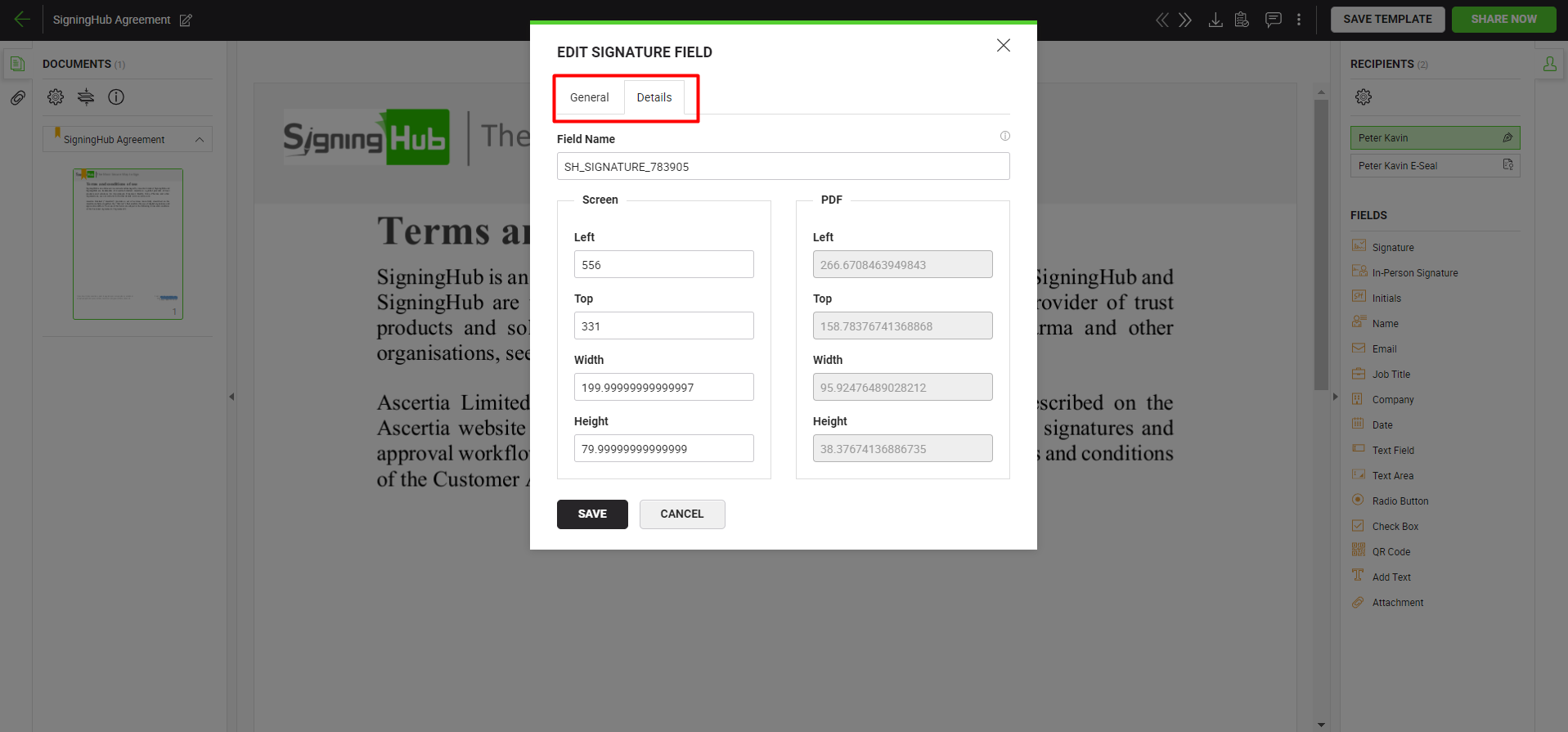
|
|
In case you do not need to automatically display the "Edit Signature Field" dialog for the Signature fields that you will drop on the Viewer, then select the "Do not show this dialog automatically when a signature field is dropped" check box. |
- Click "Save".
The field is placed. Once dropped, you can resize the field by changing its height and width using the bottom right corner to resize it diagonally as needed. The system will remember the field size and its display preferences (i.e., visible or invisible) for adding new signature fields of the same group accordingly i.e., all digital signature fields on the same documents package. - To add multiple signature fields, repeat the above steps.
|
|
|
Sign a signature field
- Take the cursor to the signature field assigned to you in the document, and click the sign icon
 appearing on it.
appearing on it.
A signing dialog will appear to sign the field, only if this field is assigned to you and it is your turn to sign in the workflow. - Add your signature as required.
Your signature field will be signed before sharing the document.
|
|
At the time of signing, if the user tries to sign the digital signature field first, the system will generate an error as all the annotations including; Initials, In-person signatures, and Simple Electronic Signatures need to be filled before moving onto a digital signature. |
Delete a signature field
Take the cursor to the signature field in the document to delete, and click the delete icon  appearing on it.
appearing on it.
The signature field will be removed from the document.
|
Signature Fields |
|||||||||||||||||||||||||||||||||||||||
|
Fields |
Description |
||||||||||||||||||||||||||||||||||||||
|
General Tab |
|||||||||||||||||||||||||||||||||||||||
|
Recipient |
A read-only field to display the signer's name along with the email and/or the mobile number, based on the selected delivery method, for whom this signature field is being configured. |
||||||||||||||||||||||||||||||||||||||
|
A mandatory field to be selected to perform signing for a user. Levels of assurance will be available as allowed in the role assigned to you.
In case the Document Owner tries to add a higher Level of Assurance in combination with Simple Electronic Signature (SES), then Simple Electronic Signature (SES) will be removed. |
|||||||||||||||||||||||||||||||||||||||
|
Display |
For a signature, this field will be available when you are allowed (in your user role) to add invisible signatures on a document.
This display property is not available in case the Level of Assurance of the Signature field is set to "Electronic Signature". |
||||||||||||||||||||||||||||||||||||||
|
Authenticate signer via OTP |
Select this check box to enable field level authentication through OTP process when attempting to sign the document. By default, this option is unselected. This option will be available for the document owner in Draft, In-Progress, and Pending modes.
This option will let the document owner send an OTP to the recipient that will used for the purpose of signing authentication. Whenever the recipient will try to sign this document an OTP will be sent to the recipient's email, mobile number, or both depending upon the document owner's service plan configuration. When the service plan allows "SMS OTP", a field to specify the mobile number of a recipient to send an OTP will be displayed. The document will be signed only upon providing the correct OTP. By default, the specified number is displayed partially masked to comply with the GDPR policy. Click
This authentication option will let the recipient sign the document after they have entered the Time based One Time Password. Whenever the recipient will try to sign this document they will be prompted to enter the Time based One Time Password from the authenticator app configured on their mobile device. In case the recipient has not configured two factor authentication (2FA), upon trying to sign a document that requires Time based One Time Password, an email will be sent to their email address to configure two factor authentication (2FA). The document will be signed only upon providing the correct Time based One Time Password.
|
||||||||||||||||||||||||||||||||||||||
|
Do not show this dialog automatically when a signature field is dropped |
Select to automatically apply the "Level of Assurance" of the current signature field to the ones that you will drop afterwards. |
||||||||||||||||||||||||||||||||||||||
|
Details Tab |
|||||||||||||||||||||||||||||||||||||||
|
Field Name |
An auto-generated (unique) field name which is used when you need to sign this form field through the API calls. You can change the name as required, but make sure the uniqueness of a field name is not compromised i.e., two or more fields in a document cannot have the same field name. This field is only available when the status of a document is Draft. |
||||||||||||||||||||||||||||||||||||||
|
Dimensions |
Use this section to relatively set the on-screen and PDF coordinates/position (Left, Top, Width and Height) of the signature field. However, you can also manually move the field to the desired position in a document using drag and drop and these coordinates will be updated accordingly. These coordinates are only available when the status of a document is Draft.
|
||||||||||||||||||||||||||||||||||||||
|
Save and Cancel buttons |
Click the "Save" button to save the configurations, or click the "Cancel" button to close this dialog. |
||||||||||||||||||||||||||||||||||||||
|
|
|
See Also
- Add in-person signature fields
- Add electronic seal fields
- Add initials fields
- Add attachment fields
- Add miscellaneous information fields
- Configure form filling
- Add QR Code
- Add Unique Identifier



